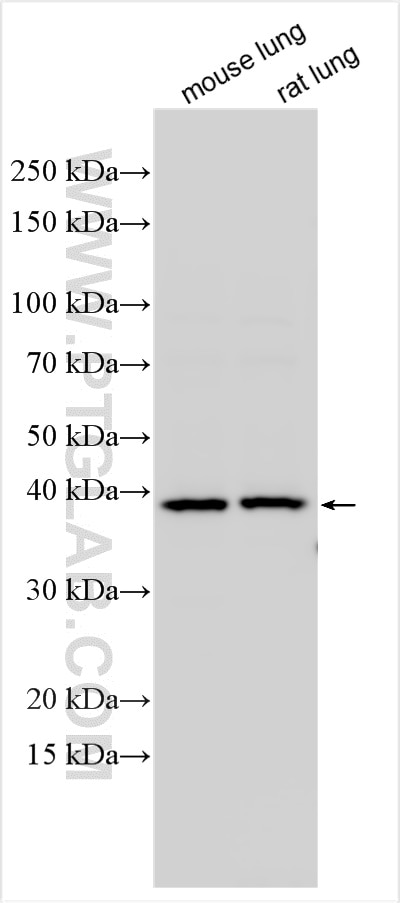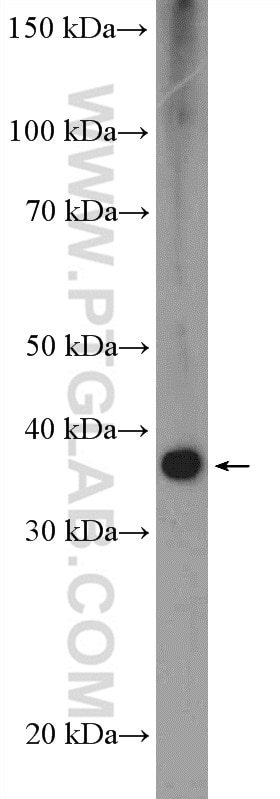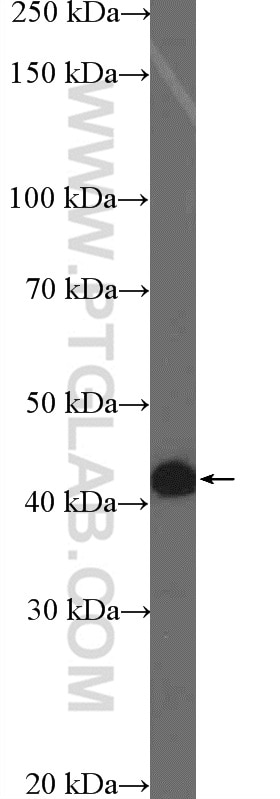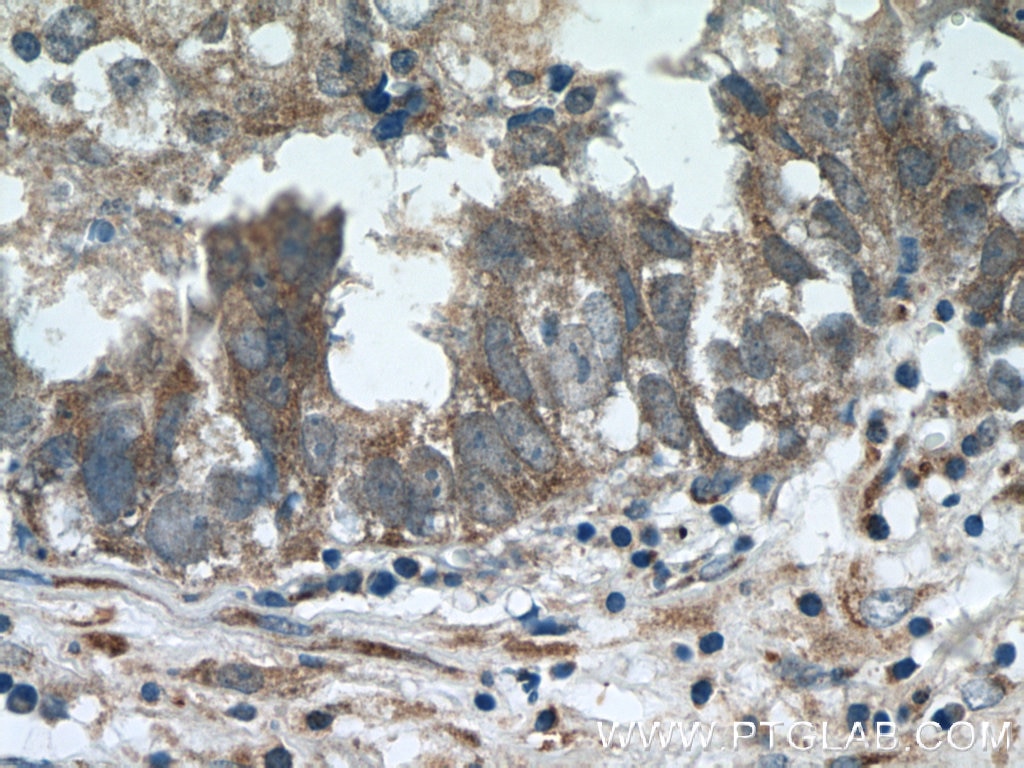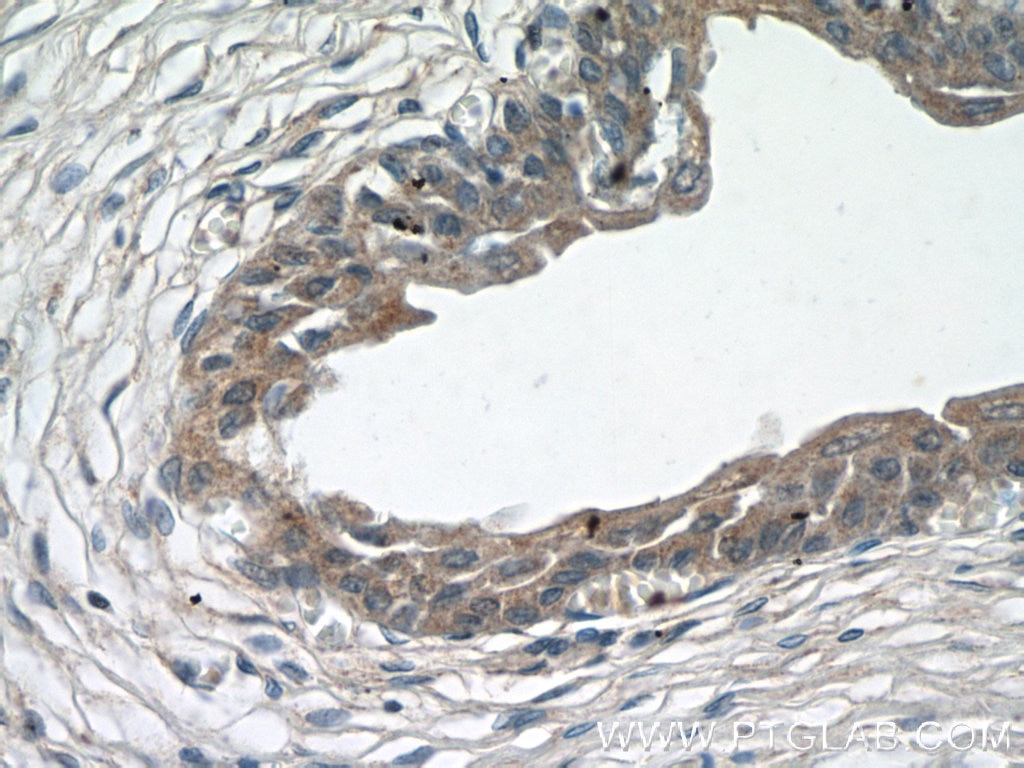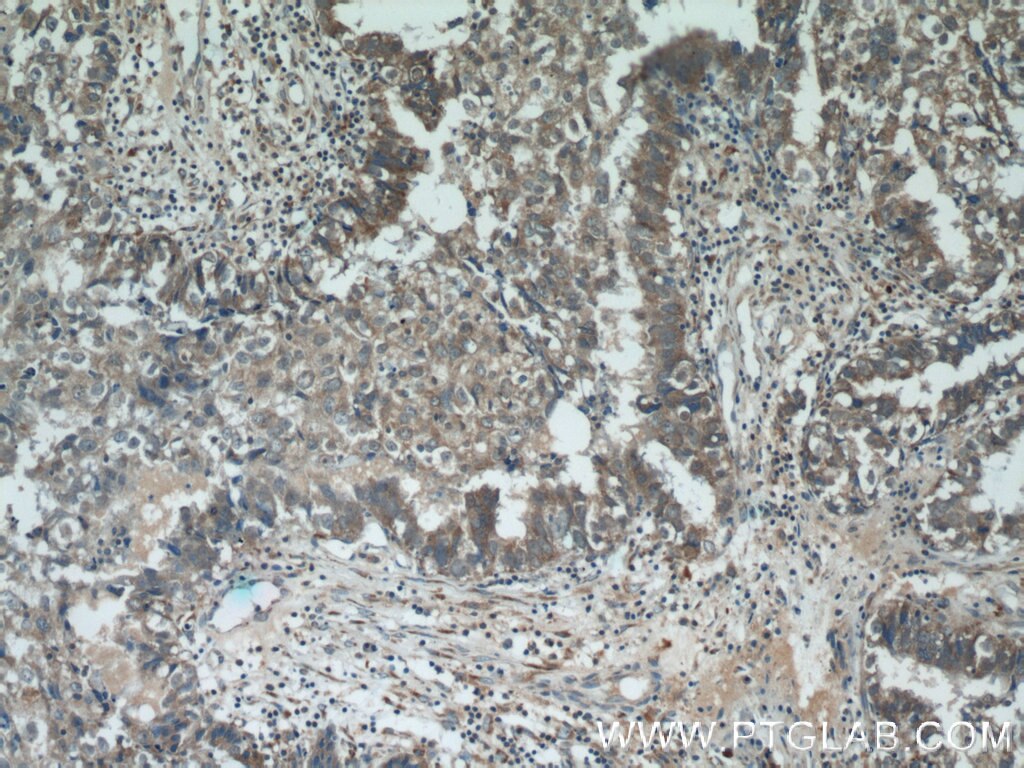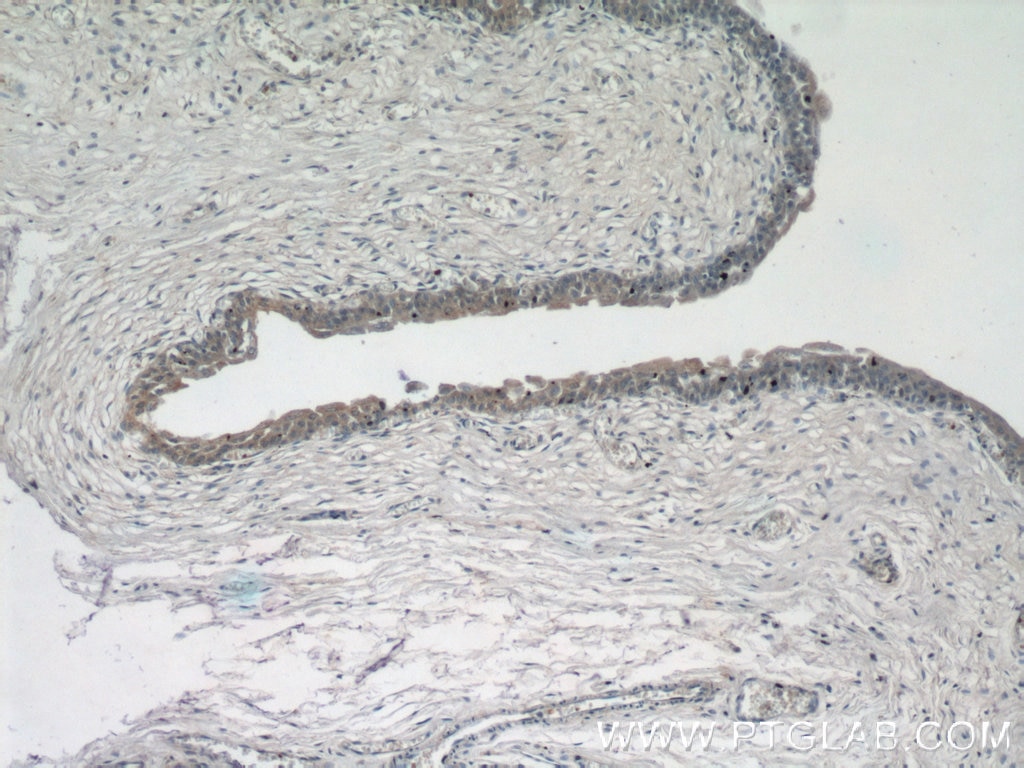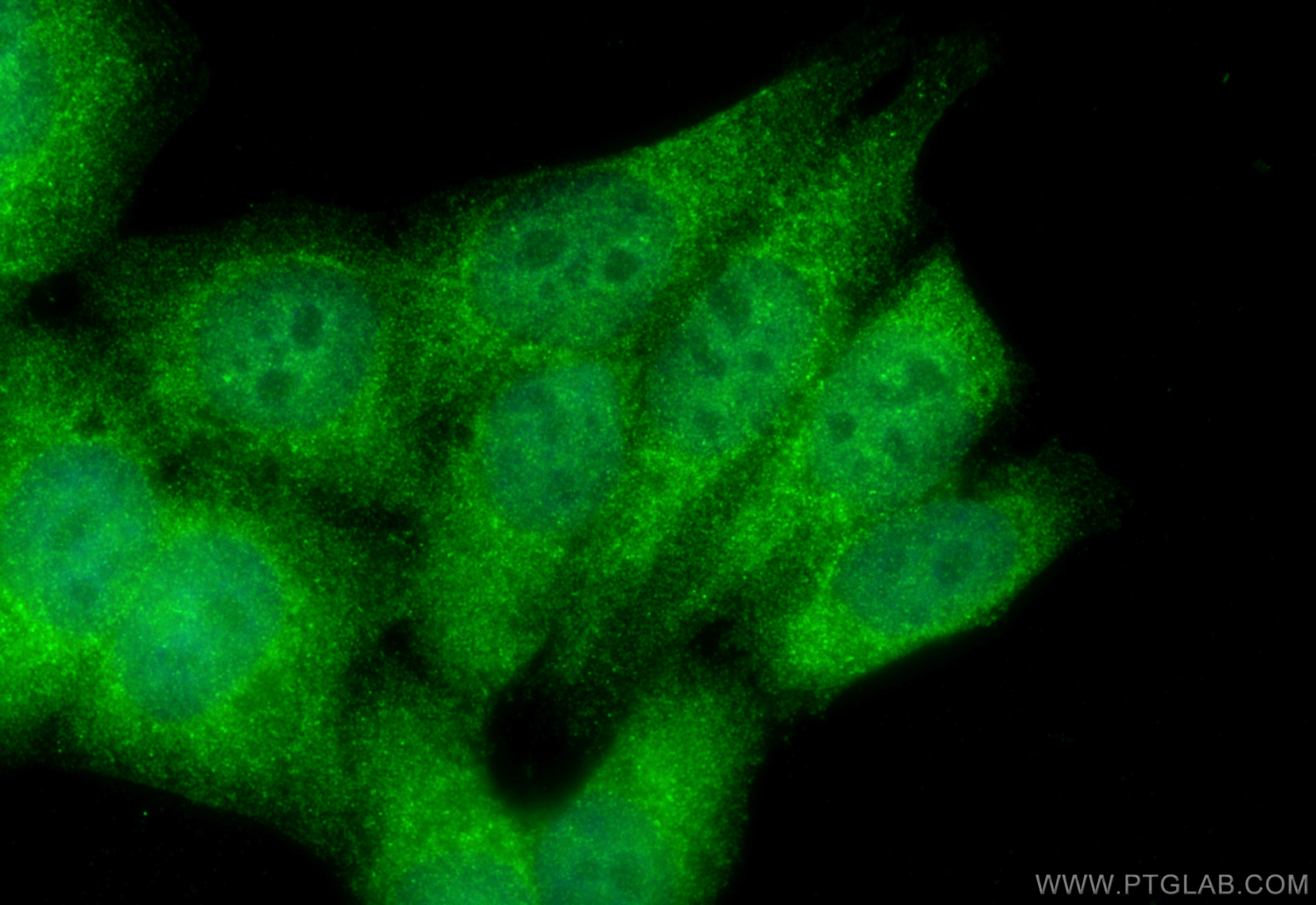Tested Applications
| Positive WB detected in | mouse lung tissue, A549 cells, rat lung tissue |
| Positive IHC detected in | human breast cancer tissue, human bladder tissue Note: suggested antigen retrieval with TE buffer pH 9.0; (*) Alternatively, antigen retrieval may be performed with citrate buffer pH 6.0 |
| Positive IF/ICC detected in | HepG2 cells |
Recommended dilution
| Application | Dilution |
|---|---|
| Western Blot (WB) | WB : 1:500-1:3000 |
| Immunohistochemistry (IHC) | IHC : 1:20-1:200 |
| Immunofluorescence (IF)/ICC | IF/ICC : 1:50-1:500 |
| It is recommended that this reagent should be titrated in each testing system to obtain optimal results. | |
| Sample-dependent, Check data in validation data gallery. | |
Published Applications
| KD/KO | See 1 publications below |
| WB | See 18 publications below |
| IHC | See 6 publications below |
| IF | See 6 publications below |
| CoIP | See 1 publications below |
| RIP | See 5 publications below |
Product Information
12737-1-AP targets ZFP36 in WB, IHC, IF/ICC, CoIP, RIP, ELISA applications and shows reactivity with human, mouse, rat samples.
| Tested Reactivity | human, mouse, rat |
| Cited Reactivity | human, mouse |
| Host / Isotype | Rabbit / IgG |
| Class | Polyclonal |
| Type | Antibody |
| Immunogen | ZFP36 fusion protein Ag3461 Predict reactive species |
| Full Name | zinc finger protein 36, C3H type, homolog (mouse) |
| Calculated Molecular Weight | 326 aa, 34 kDa |
| Observed Molecular Weight | 37-44 kDa |
| GenBank Accession Number | BC009693 |
| Gene Symbol | ZFP36 |
| Gene ID (NCBI) | 7538 |
| RRID | AB_10598485 |
| Conjugate | Unconjugated |
| Form | Liquid |
| Purification Method | Antigen affinity purification |
| UNIPROT ID | P26651 |
| Storage Buffer | PBS with 0.02% sodium azide and 50% glycerol, pH 7.3. |
| Storage Conditions | Store at -20°C. Stable for one year after shipment. Aliquoting is unnecessary for -20oC storage. 20ul sizes contain 0.1% BSA. |
Background Information
The expression of many cytokines is regulated post-transcriptionally by factors that modulate mRNA transport, translation, and stability. Much of this regulation occurs by the binding and stabilizing, or destabilizing, of cytokine mRNAs by proteins that recognize adenosine and uridine-rich elements (AREs) in untranslated regions of target transcripts. Zfp36 is a mRNA-binding protein involved in post-transcriptional regulation of AU-rich element (ARE)-containing mRNAs. It was demonstrated to physically interact with the p65 subunit of nuclear factor-κB leading to decreased nuclear import and diminished transcriptional activation mediated by nuclear factor-κB. It acted by specifically binding ARE-containing mRNAs and promoting their degradation, and has a crucial role in the post-transcriptional regulation of tumor necrosis factor (TNF). The calcualted molecular weight of ZFP36 is 34 kDa, but modified ZFP36 is about 40-45 kDa.
Protocols
| Product Specific Protocols | |
|---|---|
| WB protocol for ZFP36 antibody 12737-1-AP | Download protocol |
| IHC protocol for ZFP36 antibody 12737-1-AP | Download protocol |
| IF protocol for ZFP36 antibody 12737-1-AP | Download protocol |
| Standard Protocols | |
|---|---|
| Click here to view our Standard Protocols |
Publications
| Species | Application | Title |
|---|---|---|
Cell Res Nonenzymatic lysine D-lactylation induced by glyoxalase II substrate SLG dampens inflammatory immune responses | ||
Mol Cell Multivalent Proteins Rapidly and Reversibly Phase-Separate upon Osmotic Cell Volume Change. | ||
Dev Cell N6-Adenosine Methylation of Socs1 mRNA Is Required to Sustain the Negative Feedback Control of Macrophage Activation. | ||
Proc Natl Acad Sci U S A Brf1 posttranscriptionally regulates pluripotency and differentiation responses downstream of Erk MAP kinase. | ||
Acta Pharmacol Sin Deletion of smooth muscle ZFP36 promotes neointimal hyperplasia in mice
| ||
Am J Physiol Cell Physiol Cancer associated fibroblasts suppressed ferroptosis in glioblastoma via upregulating lncRNA DLEU1 |
